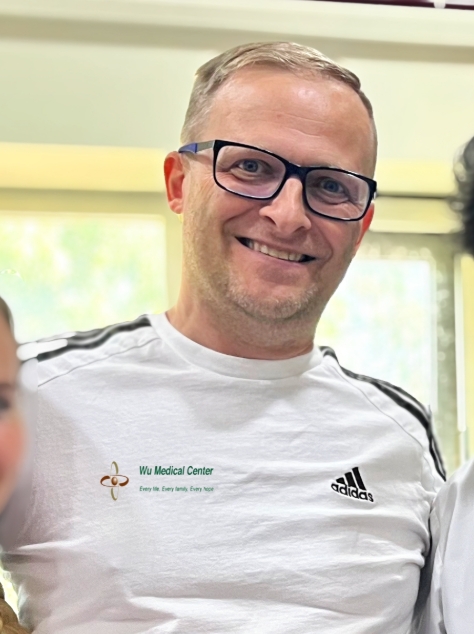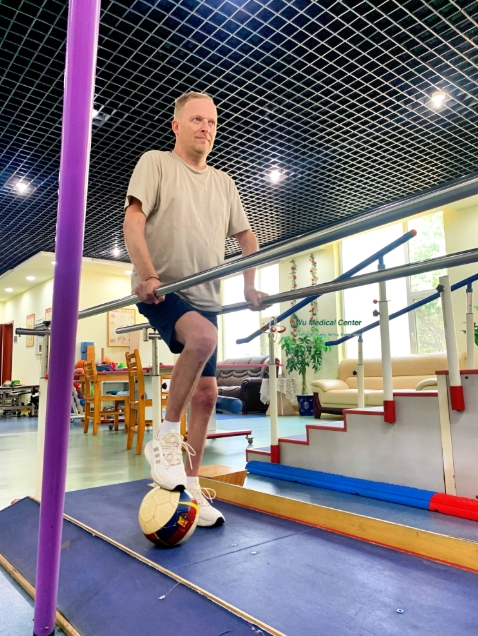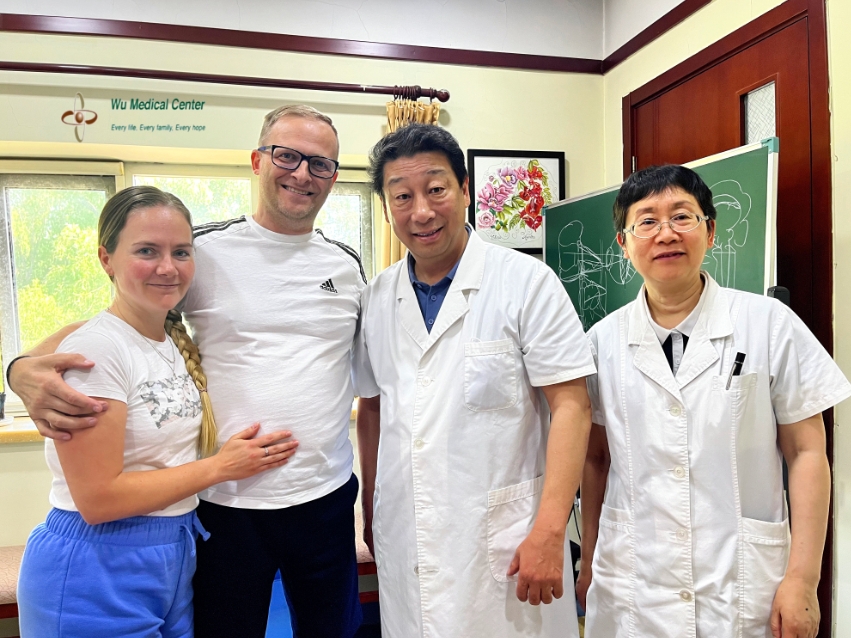Jaroslav Jirout-Amyotrophic lateral sclerosis (ALS)-(Czech)
 Patient Name: Jaroslav Jirout
Patient Name: Jaroslav Jirout
Gender: Male
Age: 52 years old
Nationality: Czech
Diagnosis: Amyotrophic lateral sclerosis (ALS)
Admission Status:
The patient developed weakness in his left fingers without any obvious cause, making it difficult to cut his nails 7 years ago. He gradually experienced walking difficulties, foot dragging, and decreased strength in both upper limbs. His condition progressively worsened, accompanied by muscle atrophy and fasciculations in the limbs. He became easily fatigued when speaking, had increased oral mucus secretion, and a significant decrease in activity endurance. Currently, there were no obvious swallowing difficulties or coughing while drinking.
Physical Examination upon Admission:
The patient's pulse was 56 beats/min, and respiration was 20 breaths/min. He was 175 cm tall, weighed 72 kg, and had an oxygen saturation of 96%. He was well-nourished with normal development. There was no significant cyanosis of the lips, and the oropharynx was not red or swollen. His respiratory movements were generally normal, with clear breath sounds in both lungs and no significant dry or wet rales. His heart rate was slightly slow, with normal heart sounds and regular rhythm, and no murmurs in any valve areas. The abdomen was soft, and the liver and spleen were not palpable below the ribs. There was no edema in the lower limbs.
Neurological Examination:
The patient was alert and in good spirits. His articulation was mildly reduced. Eye movements in all directions were flexible. His tongue was centered, with normal movements but mild atrophy of the tongue muscles. His chewing strength was approximately normal. Bilateral soft palate elevation was slightly weak, and the uvula was midline. Neck rotation and shoulder shrug strength were graded at 4. His proximal muscle strength in both upper limbs was 4; wrist flexion and extension strength in the left hand was 3+, with a grip strength of 4, and interphalangeal strength of 3-; wrist flexion and extension strength in the right hand was 4, with a grip strength of 4- and interphalangeal strength of 3. Both lower limbs have a muscle strength of 3, with dorsiflexion strength at 0, and plantar flexion strength at 3. He could not stand up independently or balance on one leg and required significant assistance from others. He could walk 100 meters slowly with support, displaying noticeable foot dragging. He could lift both lower limbs off the bed for 10 seconds while lying flat. Limb muscle tone was normal, but muscle atrophy and fasciculations were observed in all limbs. Sensation was normal. Deep tendon reflexes in both upper limbs were diminished, knee reflexes were slightly active, and Achilles reflexes were diminished. Pathological signs were negative. He could not complete the finger-to-finger test with his left hand; it was slow and laborious with his right hand. His finger-to-nose test was slower (especially on the left side), while the heel-knee-shin test was generally normal. Meningeal signs were negative.
Treatment Process:
The patient was clearly diagnosed with “Amyotrophic Lateral Sclerosis” upon admission. During his hospitalization, he received neural stem cell therapy to repair motor neuron damage, mesenchymal stem cells to enhance neurotrophic, endocrine, and immune support, alongside medications such as Edaravone, Riluzole, neurotrophic factors, and reduced glutathione as part of CAST treatment, combined with comprehensive rehabilitation therapy.
Post-Treatment:
The patient’s motor function has significantly improved, with a notable increase in muscle strength: neck rotation and shoulder shrug strength are now grade 5. Proximal muscle strength in both upper limbs is essentially grade 5; left wrist flexion and grip strength are now grade 4+, with interphalangeal strength at grade 3+; right wrist flexion and grip strength are at grade 5, with interphalangeal strength at grade 4. Muscle strength in both legs is now grade 4; left dorsiflexion strength is grade 1+, right dorsiflexion strength is grade 2+, and plantar flexion strength in both feet is grade 5-. He can stand independently for 20 seconds. While lying flat, he can lift both lower limbs off the bed for 15-20 seconds. He can complete the finger-to-finger test with his left hand; the speed of the finger-to-nose test has increased and is more agile than at admission. His energy, physical fitness, and exercise endurance have significantly improved.



